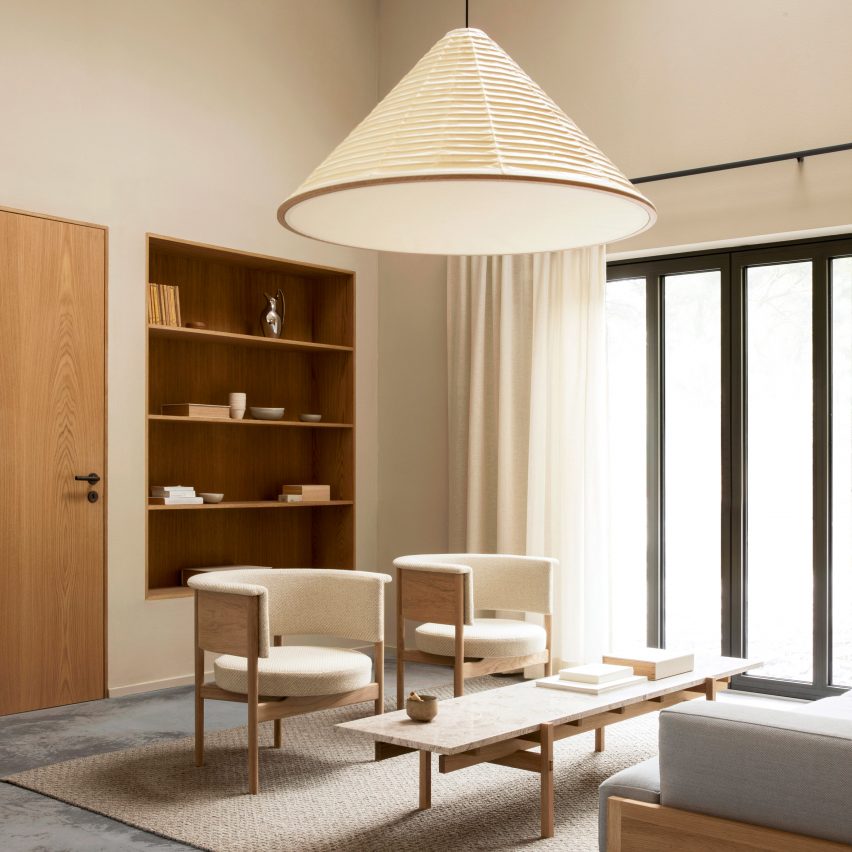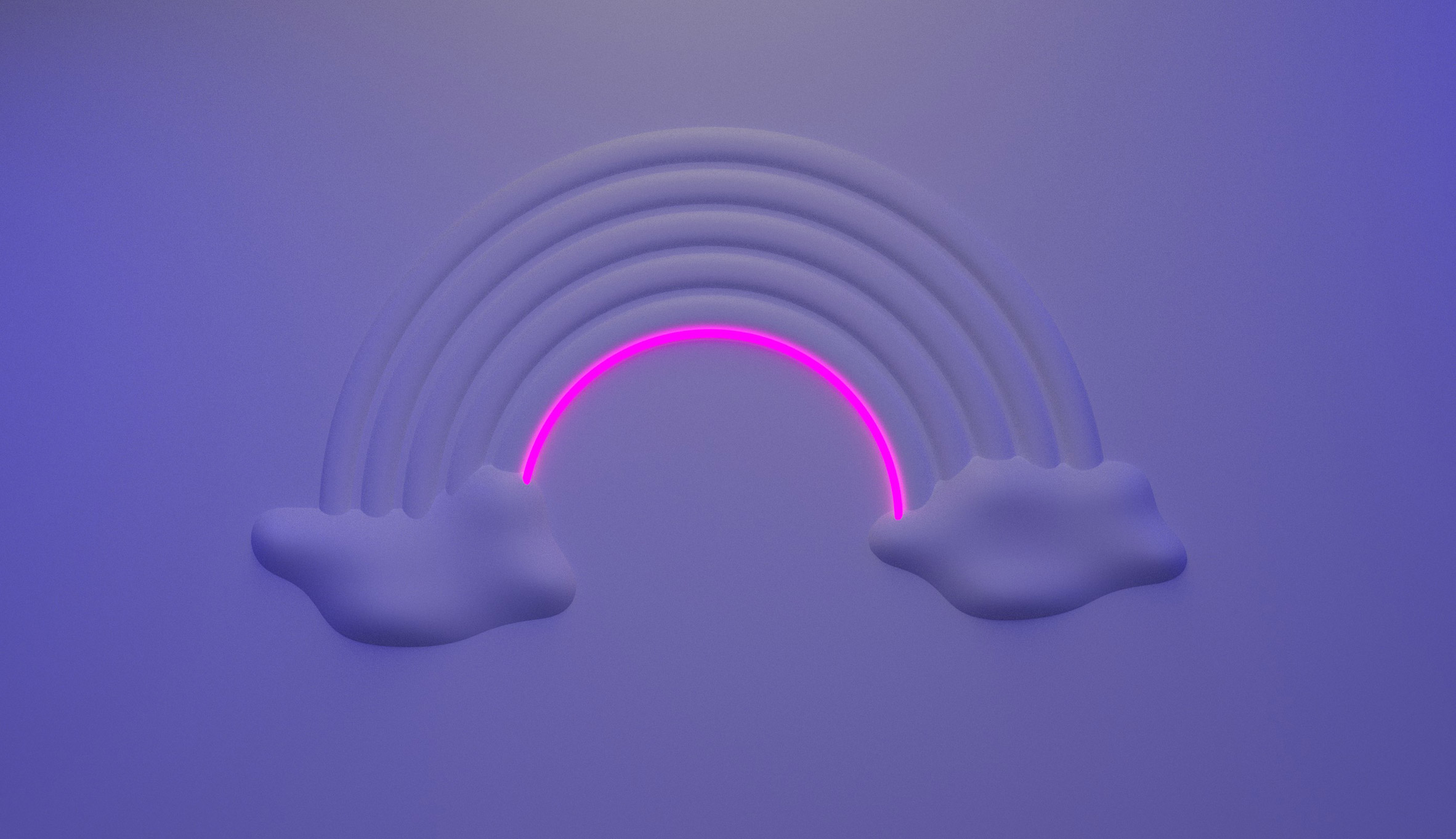
Chiara’s creative platform Illustrazioni Seriali has created its first purely illustrative artist residency “Spazi”, asking illustrators to respond to the theme of space.
from It's Nice That https://ift.tt/3kS50oC

Chiara’s creative platform Illustrazioni Seriali has created its first purely illustrative artist residency “Spazi”, asking illustrators to respond to the theme of space.

Aimed at video creators with over 10k subscribers, the platform’s branding puts makers front and centre, aiming to feel as if it’s “always in motion”.

In photographing children living by the world’s largest man-made lake, Jeremy needed to create a sense of trust with his vulnerable subjects.

Norm Architects has completed Archipelago House, a pine-clad holiday home on the coast of Sweden that's designed to embody both Scandinavian and Japanese aesthetics.
Copenhagen-based practice Norm Architects created Archipelago House, which is located just north of Gothenburg, for a couple and their four children.
It's a stone's throw away from a holiday home that the mother of the family frequented when she was younger.

Archipelago House comprises a quartet of pine-wood volumes that stagger in line with the site's rocky terrain.
Each of the volumes features gabled roofs, subtly mimicking the form of the boathouses which appear along the nearby seashore.

"We like to consider the spirit of a place and integrate a new building structure more or less flawlessly into its surroundings," partner at Norm Architects Frederik Werner told Dezeen.
"The building should look natural to the site and put the focus on the beautiful surroundings and the life unfolding in the place rather than the building itself," he continued.
"It is important for us that architecture does not feel alien to a site – especially in a place like this where there is a perfectly harmonised small village on the shore with other wooden houses around."

Inside, the practice has used natural materials to devise a sequence of muted, pared-back living spaces that nod to traditional Scandinavian and Japanese aesthetics.
Handleless oak cupboards feature in the home's kitchen, at the centre of which is a jet-black breakfast island with in-built drawers. Stone tiles have then been used to line surfaces in the bathrooms, which have been finished with dark-wood vanity cabinets.

The influence of Japanese design can be observed most clearly in the home's double-height lounge, which is dressed with furniture that Norm Architects has produced in collaboration with Karimoku Case Study – the sister brand of Japanese manufacturer Karimoku.
This includes a pebble-grey sofa, stone-topped coffee table and pair of armchairs that boast arching backrests upholstered in creamy fabric.
Archipelago House is the third project that the brand has worked on since its launch in 2019, joining the Kinuta Terrace apartment block in Tokyo and the Blue Bottle Coffee cafe in Yokohama.

The home's living area also has a delicate cone-shaped lantern that was created bespoke for the project by Kojima Shouten, a Japanese brand that has been making lanterns for over 230 years.
Crafted from washi paper, the lantern's peaked form is meant to act as another reference to the architectural form of Archipelago House.
More squat lanterns that balance on four-legged stands appear in the home's tranquil sleeping quarters. Here there are also book-like storage boxes that Norm Architects designed alongside Danish brand August Sandgren, where inhabitants can tuck away their personal trinkets.

Beyond the home's dining room lies an expansive outdoor deck where the family can play games or enjoy alfresco dinners with views of the adjacent sea and small, rugged islands.
"Nature plays an important role in our soft minimalist approach, where we believe that buildings should be a functional backdrop and structure for human engagement," added Werner.
"It might be a romantic relationship with nature – but after all, that is why we want to escape the city once in a while and reconnect with nature in our holiday homes."

Norm Architects was established in 2008 by Kasper Rønn Von Lotzbeck and Jonas Bjerre-Poulsen.
The practice's Archipelago House joins a number of getaway homes in scenic Sweden – others include Summerhouse Solviken by Johan Sundberg Arkitektur, which is raised up on steel stilts, and Villa Vassdal by Studio Holmberg, which boasts minimal plywood interiors.
Photography is courtesy of Jonas Bjerre-Poulsen of Norm Architects.
The post Archipelago House by Norm Architects is a minimal family getaway in Sweden appeared first on Dezeen.

Designers Giorgio Gasco and Gianmaria Della Ratta have created a range of decorative stucco mouldings based on the interior decor of rented chat rooms used by cam girls.
The Digital Muses collection consists of eight plaster wall pieces featuring elements such as cherubs, dolphins and vibrators, which the designers spotted in chat rooms used by cam girls who put on live sex shows via video streaming in exchange for money.
The collection, which is based on research and interviews with cam girls, was presented at Rotterdam's Galerie Lecq and as part of this year's virtual edition of Dutch Design Week (DDW).

The designers, who both graduated from Design Academy Eindhoven, spoke about the collection during a Dezeen panel discussion exploring how the coronavirus pandemic has impacted intimacy.
"Physical spaces have been affected a lot by the coronavirus crisis but on the contrary, the virtual space has been amplified and strengthened," Della Ratta said in the talk.
"So digital media is now part of our daily lives and especially in this situation, we cannot live or work without it. So as designers, we felt the need to investigate this universe, to understand it and to use it for design purposes."

The number of people turning to cam girls has risen during the pandemic, with one performer reporting a 30 per cent increase in business and streaming site CamSoda doubling its viewers.
Through Digital Muses, Gasco and Della Ratta discovered that set design is a key component of cam girls' work.
"This one girl, in particular, told me that she tries to dress according to the room [she is in]," Gasco said during the panel talk. She went on to describe matching her outfit to her backdrop as an "essential part of the job" because it has a noticeable effect on the spectator.

As a result, an entire industry has sprung up to help cam girls set the right mood, with YouTube channels dedicated to tutorials on how to achieve the right lighting and scenography. There are also so-called cam studios available to rent, which come equipped with a range of different backdrops and professional streaming technology.
Gasco and Della Ratta identified a distinct visual language in these backdrops, consolidating elements of technology such as bright, electroluminescent (EL) wires and keyboards with the tactility of cushions and blankets and soft, feminine colours like baby blue, pink and purple.

"It's very interesting how they create their own identity," said Gasco.
"Our goal is to elevate this aesthetic universe of digital content because we see a big artistic value in these scenarios. We then try to extrapolate some symbols, we extrapolate the language, even the dress code that they are using and try to adapt it into a design piece."

In a playful inversion of how our real lives have become mediated by webcams during the pandemic, the duo took this design aesthetic that was developed for the virtual world and transplanted it into real, tangible objects.
To do this they relied on traditional plaster reliefs, which have been used since antiquity to immortalise symbols and entire scenes within architecture.
"Stucco is very decorative but also a narrative element and we wanted to use this powerful aesthetic and narrative in combination with the cam girl world, which questions the concept of intimacy and sexuality," said Della Ratta.
"So our stucco pieces are not only decorative or furnishing pieces but also pieces of storytelling, of this digital movement that [has its own] symbols, messages and stories."

Traditionally cast in plaster and marble powder, the stucco is shaped to suggest different sex toys such as a ball gag, which is integrated into a circular mandala.
Another piece features an abstract swirling pattern, created by replicating and multiplying the sinuous shape of the Lovesense – a vibrator that has become increasingly popular in the camming scene because it can be remotely controlled by viewers via an app.

Yet other pieces in the collection draw on more cutesy, girlish iconography from cheeky cherubs to rainbows and dolphins, in a bid to move away from overly stereotyped, singular representations of sex workers.
Similarly, cam girls' use of tactile fabrics is picked up in a piece called Furry20, which mirrors the fur blankets and pillow they often rely on to soften a space and nods to the wigs they use for cosplay sessions.

Each of the all-white reliefs is also adorned with a wire that is coated in an electroluminescent phosphor coating, which, as the name suggests, emits a soft glow when it is connected to power.
These EL wires are widely used by gaming streamers who use them to pimp their computers, but they have also become popular among cam girls as an extremely online way to add ambient lighting to their backdrops.

The live panel discussion was part of a series of talks streamed as part of this year's Dezeen x DDW collaboration.
In their talk, Gasco and Ratta discussed the intimacy of workplaces with Sabine Marcelis and Li Edelkoort while other talks focused on privacy and data as well as our relationship with nature and the products we use day to day.
Dutch Design Week 2020 took place online from 17 to 25 October, with Dezeen as media partner. For details of more architecture and design events, visit Dezeen Events Guide.
The post Chat rooms used by cam girls inform stucco wall decorations in Digital Muses project appeared first on Dezeen.